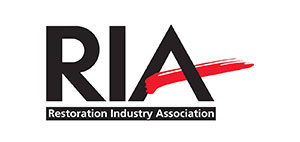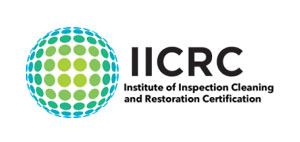Ever wondered why painting over smoke-stained walls doesn’t always work? It’s not just about looks; it’s about making your home safe and valuable again. Smoke damage restoration is key to this.
Understanding smoke sources like cigarettes, candles, and fireplaces is vital. These can leave nicotine stains and soot that harm your health and walls. It’s important to tackle this damage right.
Cleaning smoke damaged walls is more than just painting. It needs detailed cleaning and the right primer for lasting results. Always wear protective gear and ensure good airflow to avoid breathing in harmful particles.
Begin by removing furniture and vacuuming soot from walls and floors with a brush attachment. Then, use a dry cleaning sponge to remove residue without spreading it around. Next, a top-notch degreaser is applied to walls and ceilings. Furniture gets special care to ensure a safe and complete soot stain removal.
Key Takeaways
- Knowing the sources of smoke helps in fixing smoke damage.
- Wear protective gear and ensure good airflow when cleaning smoke damaged walls.
- Start with furniture removal and vacuuming to clean thoroughly.
- Dry cleaning sponges are great for lifting and absorbing soot without spreading it.
- Proper degreasing makes sure all hidden damage is cleaned.
- Each piece of furniture needs its own cleaning method for complete soot removal.
Understanding Smoke Damage and Soot
Smoke damage happens when things like wood, plastics, or synthetics don’t fully burn in a fire. This creates soot, a black, powdery stuff that sticks to cooler surfaces. Walls and furniture often get covered in soot after a fire. It’s important to know about smoke damage and soot to clean and restore things properly.
Soot types depend on the fire’s conditions:
- High-oxygen fires make a dry, powdery residue. This can be cleaned with dry tools like vacuuming or brushing.
- Low-oxygen fires create oily soot. This needs wet cleaning to get rid of it.
Knowing the different smoke damage types is key. Using the wrong cleaning methods can make soot worse and make fixing things harder. It can also be bad for people’s health. So, figuring out the soot type and choosing the right cleaning method is crucial. Getting experts to help with cleaning and fixing things is best to ensure safety and effectiveness.
Initial Steps to Take After Smoke Damage
After putting out the fire, the first thing to do is make sure everyone is safe. Don’t touch anything yet to avoid spreading soot. It’s important to open windows and use fans to clear out smoke smells and reduce the risk of breathing in soot particles. These particles can be harmful, especially for your lungs.
- Ensure Safety Gear: Always wear protective gear like gloves, masks, and long sleeves to keep safe from soot and debris.
- Ventilate the Area: Proper ventilation helps to clear smoke odors and minimize exposure to harmful particles.
- Debris Removal: Remove big debris first, making it easier to start the cleanup process.
Because of the dangers of soot and the risk of more damage, it’s best not to try to clean up by yourself. They ensure the best outcome for everyone.
How do you treat smoke damaged walls?
When dealing with smoke damaged walls, start by making sure the area is well-ventilated. Make sure you and anyone helping you are wearing protective gear. It’s important to cover floors and remove belongings to avoid more damage during cleaning.
Begin by using a HEPA vacuum cleaner to pick up loose soot. Be careful and methodical when vacuuming to avoid smearing the soot. After vacuuming, use a dry soot sponge to clean away tough stains. Always wipe the walls downwards to prevent soot from getting deeper into the surface.
Don’t scrub the walls as it can push soot deeper. Once most of the soot is gone, use a high-alkaline detergent mixed with water on any remaining stains. Gently apply this mixture to the affected areas, then rinse with clean water and dry the walls well.
For unique or delicate surfaces like bricks, ceilings, or carpets, you might need special treatments. These areas often require professional help to fix the smoke damage properly. This ensures the materials are not damaged further.
Cleaning Materials Needed for Soot Removal
When tackling soot removal, having the right supplies is key. A soot or dry-cleaning sponge is perfect for the first step. It lifts particles off surfaces without moisture, preventing smudging or damage.
A HEPA vacuum is also essential for a thorough clean. It safely picks up fine soot without spreading it around. This keeps the cleaner and the environment safe.
Here are some cleaning solutions that work well for different types of soot:
- Vinegar: A natural cleaner that gets rid of soot smells.
- Baking Soda: Great for scrubbing and neutralizing acidic soot.
- Rubbing Alcohol and Hydrogen Peroxide: Good for breaking down tough soot.
- High-alkali detergents and degreasers: Best for greasy soot.
Commercial air scrubbers are also crucial. They filter the air, catching soot particles and helping to remove odors during vacuuming.
Choosing the right tools and materials for soot removal is important. It depends on the soot type and the surface. Knowing the unique features of each tool and solution helps you clean soot effectively from walls and other areas.
Step-by-Step Process for Cleaning Smoke Damaged Walls
After a fire, cleaning smoke-damaged walls needs a careful plan. First, put on protective gear and make sure the room is well-ventilated. This step is key for safely removing smoke stains.
- Begin by moving or covering any items in the area to keep them clean.
- Next, use a HEPA vacuum to carefully pick up any visible soot from walls and ceilings. This helps get rid of loose particles first.
- Then, use a dry soot sponge to clean the walls from top to bottom. This method prevents streaks and ensures all stains are removed.
- For tough stains, try a mix of high-alkaline detergent and water next. This solution breaks down oily soot and helps clean deeply.
- Wash the surfaces with clean water and dry them with absorbent towels to get rid of any leftover detergent.
- Cleaning the ceiling before the walls helps prevent re-contamination of just-cleaned areas.
For soot-damaged carpets, start by removing large debris by hand. Then, sprinkle absorbent powder like baking soda to tackle odors and loosen stains. Finish with a thorough vacuum, and for hard-to-remove spots, use chemical cleaners made for smoke stains.
Following these steps carefully helps clean smoke-damaged walls well. It brings the affected areas back to almost their original state.
Conclusion
Fixing smoke damage is more than just making things look good. It’s about making sure the air is safe to breathe again. Walls damaged by smoke need a deep clean and the right treatment, depending on the soot type and surface. Acting fast and right is key to fixing smoke damage and keeping everyone healthy.
There are many cleaning tools and ways to remove different kinds of soot from various surfaces. This helps get rid of smoke damage fully without causing more problems. But for big smoke damage jobs, it’s smart to call in the pros. They have the skills and gear needed to fix things right, making it easier for homeowners.
Reacting quickly to smoke damage is very important. Soot and smoke can move fast and spread everywhere. Knowing when to call for professional help can make a big difference. With the right advice and tools, homeowners can tackle smoke damage and restore their homes effectively.





